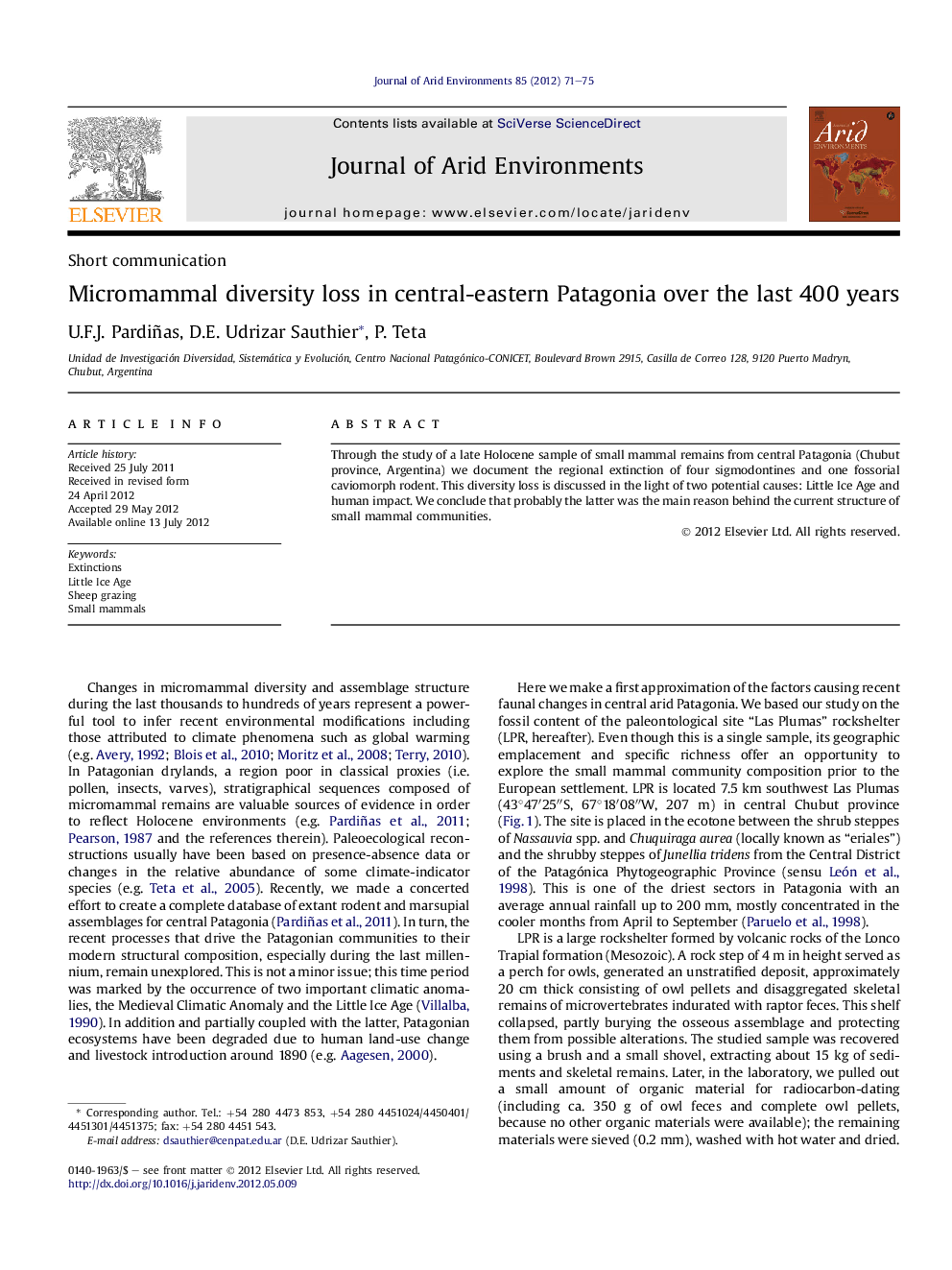| Article ID | Journal | Published Year | Pages | File Type |
|---|---|---|---|---|
| 4393318 | Journal of Arid Environments | 2012 | 5 Pages |
Through the study of a late Holocene sample of small mammal remains from central Patagonia (Chubut province, Argentina) we document the regional extinction of four sigmodontines and one fossorial caviomorph rodent. This diversity loss is discussed in the light of two potential causes: Little Ice Age and human impact. We conclude that probably the latter was the main reason behind the current structure of small mammal communities.
► We study fossil (0.4 ka) and recent samples of Patagonian micromammals. ► We compare community structure prior to the most severe anthropic impact and the modern configuration. ► Richness and diversity loss, with the local extinction of four rodent species characterized the modern communities. ► Micromammalian changes reflect a reduction of herbaceous and dense shrubby coverage and soil compaction. ► Assemblage impoverishment can be attributed mostly to human activities.
